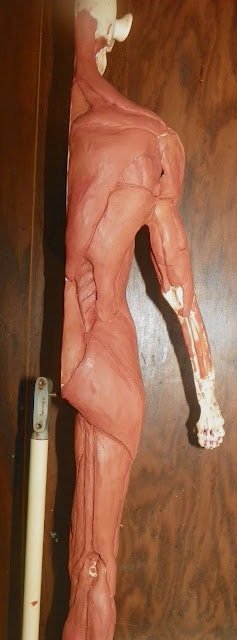The semester has come to an end and now it’s time for me to reflect on what I’ve learned. Like most studio courses there where times when I succeeded and other times when I struggled. This course was very informative and I learned a lot about drawing the human body. I found life drawing to be one of the more challenging art studio courses that I have taken.
I still remember the first day of in-class drawing. I left that class with an extremely tired shoulder from producing so many gesture drawings. Although I didn’t like them at first, I soon noticed their beneficial factors. It’s interesting that in most cases my gesture drawings are proportional accurate. Gesture drawings are the foundation to life drawing and it’s important to be able to capture an entire pose in under a minute (Gesture Drawing 1).
Aside from gesture drawings, the manikin was another important aspect of the course. I spent several hours each week building clay muscles. This allowed me to develop a deep understanding of the human muscular system and also helped me identify and accurately depict the muscles during drawings. I worked hard on my manikin and I’m very satisfied on it turned out (Manikin 1).
The last major component of this class was based on long drawings. This is where I was able to develop some very beautiful drawings. Along with the beautiful drawings came struggles. Throughout the course I struggled with contour lines and foreshortening. I did my best this semester at trying to make theses components feel easy, but I still find them very difficult. They are the more challenging aspects of drawing. Overall, this course was a good learning experience and will help me become a better art educator.













